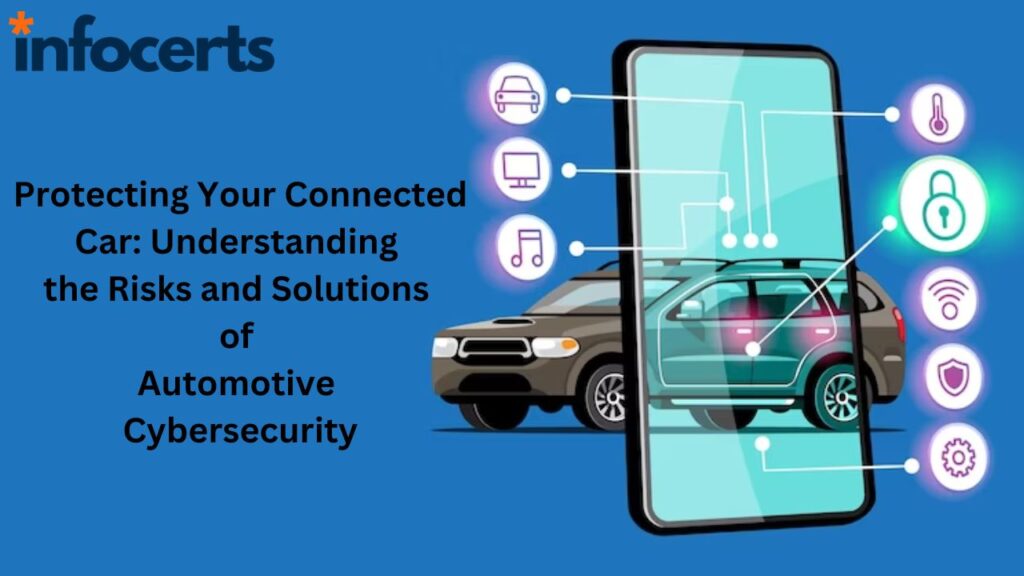In today’s technologically advanced world, Connected Car Cybersecurity have become increasingly popular due to their convenience and numerous features. These vehicles are equipped with sophisticated systems that enable them to communicate with other devices, making driving safer and more enjoyable. However, with this increased connectivity comes the risk of Automotive cybersecurity threats..
Risks in Automotive Cybersecurity:
- Remote Exploitation: Connected cars are vulnerable to remote attacks, where cybercriminals can exploit weaknesses in the vehicle’s software and gain unauthorized access to critical systems like the engine, brakes, or steering.
- Data Breaches: The vast amount of data collected by connected cars, such as location, driving habits, and personal information, poses a significant threat if it falls into the wrong hands.
- Malware and Ransomware: Just like computers and smartphones, connected cars can be infected with malicious software, disrupting vehicle operations and demanding ransom payments to restore functionality.
- Lack of Regulation: The automotive industry is still adapting to the challenges posed by Cybersecurity, leading to potential vulnerabilities in software and firmware.
Solutions for Automotive Cybersecurity:
- Regular Software Updates: Car manufacturers must provide timely software updates to patch any vulnerabilities discovered after the vehicle’s release.
- Encryption and Secure Communication: Data transmitted between the vehicle and external devices should be encrypted to prevent interception and unauthorized access.
- Multi-Factor Authentication: Implementing multi-factor authentication can add an extra layer of Security, making it harder for cybercriminals to gain access to the vehicle remotely.
- Intrusion Detection Systems (IDS): IDS can monitor the vehicle’s network for any unusual activities or anomalies and take preventive measures against potential threats.
- Collaboration and Regulation: The automotive industry, cybersecurity experts, and government bodies must collaborate to establish standardized security protocols and regulations to ensure the safety of Connected Car Cybersecurity.
| Risks in Automotive Cybersecurity | Solutions for Automotive Cybersecurity |
| Remote Exploitation | Regular Software Updates |
| Data Breaches | Encryption and Secure Communication |
| Malware and Ransomware | Multi-Factor Authentication |
| Lack of Regulation | Intrusion Detection Systems (IDS) |
Conclusion:
While connected cars offer numerous benefits, they also present cybersecurity risks that must not be overlooked. Vehicle manufacturers, consumers, and policymakers all play vital roles in safeguarding our connected cars from potential threats. By understanding the risks and implementing robust cybersecurity solutions, we can enjoy the benefits of connected cars while ensuring our safety on the road. Always remember to stay vigilant and keep your vehicle’s software up-to-date to protect yourself and others from potential automotive cybersecurity breaches
——————————————————————————————————————–
Infocerts, 5B 306 Riverside Greens, Panvel, Raigad 410206 Maharashtra, India
Contact us – https://www.infocerts.com

